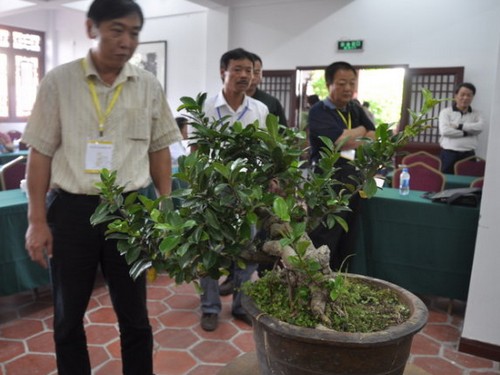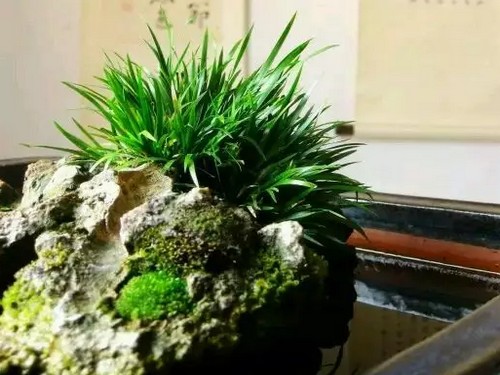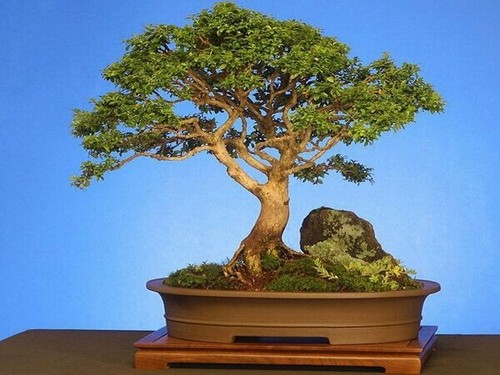The coverage of proportion in the process of bonsai pile landscape modeling
Bonsai art proportion is appropriate and harmonious, giving people pleasure, so as to obtain aesthetic pleasure; on the contrary, it is difficult to evoke aesthetic resonance. The "inch" and "ruler" in bonsai "shrinking Dragon into inch" and "close distance" clearly tell us that there is an aesthetic factor of "proportion" in it.

For pile scene modeling, scale is a big concept, which covers the whole process of pile scene modeling.
(1) the proportion runs through the modeling creation all the time.
From the selection of pile blank (including pile selection and pile intention)-- vertical and horizontal, height, spacing, combination, root expansion area, length of grafting support, cutting-pile blank cultivation, the arrangement and orientation of the upper and lower branch supports-- pruning and application-- pot planting-- forming and maintenance-- fittings, and so on, the proportion runs through every link. This is determined by the growth characteristics of plants and the artistic characteristics of pile scenery.
(2) the proportion restricts the specification type of pile scene in space.
Bonsai is known as "three-dimensional painting" because it occupies a certain space and is different from landscape architecture. Different scales determine different types of specifications, more than a certain scale, that is, courtyard trees or garden trees, rather than bonsai. If divided according to the height of the tree crown, the large pile scene is generally 81cm-15Ocm, the medium is 41cm-80cm, the small is lOcm-40cm, and the micro is below lOcm.
(3) the proportion acts on the different styles of pile landscape modeling in form.
Different modeling forms have different requirements for the ratio of trunk thickness, the length of curvature, the density of branches and leaves, the size of space gas hole and so on. To a certain extent, the proportional relationship is complementary to other modeling techniques. It affects the form and style of the work. For example, the branches of Lingnan are truncated and Cangxiong Weijian, the clouds of Suzhou are elegant and elegant, the tabletop of Yangzhou is beautiful and magnificent, the square crutches of Sichuan are elegant and strange, the cutting and use of Shanghai is ancient, the density of Hubei is full of momentum, the dwarf trees of Taiwan are neat and luxuriant, the ancient banyan roots of Fujian are waterfalls, and the flood and drought trees and stones of Jiangsu and Zhejiang are mixed with each other. As well as the arrogant, free and easy style of Lingnan Su Ren Gao Piao all reflect the difference in its structure, skill and layout, but it is precisely in these different "techniques" that there is a "partner proportion" required by the aesthetic consciousness that echoes each other. Check each other and connect with each other.
(4) the proportion deepens the artistic effect of modeling idea in content.
We often say that "people who play bonsai should have a tree in their chest", but whether the tree in their chest can become the tree in front of them, and whether the tree in front of them is in line with the image of the tree, is wild, wild, or elegant and elegant; is elegant and solemn, or elegant and chic; is Weian tall and straight, or elegant and whirling, and so on, while paying attention to different modeling techniques, it is permeated with the proportional relationship between each other. The same tree species and the same tree phase structure may weaken the artistic effect of the work because the proportion is not in place.
Time: 2019-05-23 Click:
- Prev

The eye-moistening and eye-protecting effect of calamus bonsai
Nowadays, many people sit in front of the computer for a long time every day, and young people like to keep playing with their mobile phones. Xerophthalmia caused by eye fatigue is very common. The ancient literati also had the disadvantage of losing their eyesight in reading and writing at their desk. In view of this situation, a very light countermeasure was invented in traditional life.
- Next

Bonsai creation: insipid and strange, combining strength with softness
Insipid and peculiar are two different artistic styles and artistic expressions. In bonsai art, some works win by surprise, such as Qifeng, Qishi, strange trees, strange flowers and so on, which are relatively easy to see, while some works seem ordinary, but in fact, they are unusual, which can make the viewer feel like an olive.
Related
- Fuxing push coffee new agricultural production and marketing class: lack of small-scale processing plants
- Jujube rice field leisure farm deep ploughing Yilan for five years to create a space for organic food and play
- Nongyu Farm-A trial of organic papaya for brave women with advanced technology
- Four points for attention in the prevention and control of diseases and insect pests of edible fungi
- How to add nutrient solution to Edible Fungi
- Is there any good way to control edible fungus mites?
- Open Inoculation Technology of Edible Fungi
- Is there any clever way to use fertilizer for edible fungus in winter?
- What agents are used to kill the pathogens of edible fungi in the mushroom shed?
- Rapid drying of Edible Fungi

